Today dawned miserable and cold—perfect conditions to visit Cardiff Castle without tripping over tourists. (The flaw in my logic was that it was miserable and cold, but I’m not one to let a little common sense get in the way of a castle.)
So here’s the tale of Cardiff Castle, to the best of my slightly hypothermic knowledge.
Once upon a time, there was probably a Neolithic site.
Then the Romans came along. They built a fortress. The pale beige bricks below the red line are fragments of the original Roman wall:
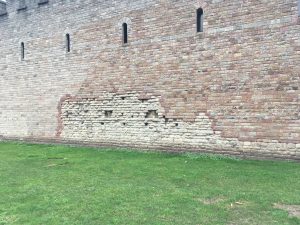
The Roman gate probably looked like this…
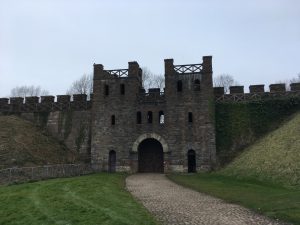
…although this is the second reconstruction built on this spot (1922). The original reconstruction from the late 1800s was accused of being too tall (not to mention, judging by the black and white photo on the plaque, the towers were round, and Romans were big on square things).
After the Romans withdrew, there was a small settlement of the site, some foundations of which survive, but no further attempt was made to fortify until the Normans came along in 1081 and built a motte-and-bailey castle with a wooden keep. It probably looked something like this:
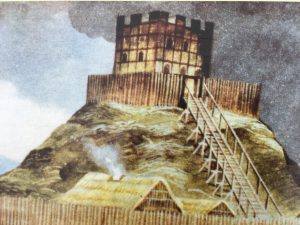
(Contrary to what it sounds like, the motte is not the moat. The motte is the man-made mound. The bailey is the wall around the bottom of the mound, according to Google, although according to common sense, since a castle yard is sometimes called a bailey, I would hazard to guess that the bailey is actually the wall around the keep at the top. Google and I must agree to disagree.)
Wooden keeps were advantageous for two reasons: They could be built very quickly, as in quicker than the displaced Welsh villagers could turn around and kill you, and they (the keeps, not the villagers) were lighter, so they were less likely to collapse the nice new motte that probably still consisted of loose earth.
In the 1130s, the wooden keep was replaced by a stone one that still stands:
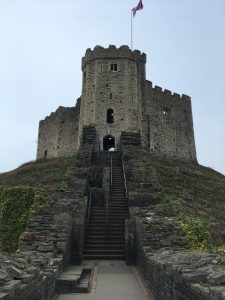
(Although it used to be much more extensive—the crumbled walls flanking the modern stairs used to be almost as tall as the keep).
In the 1300s, Gilbert de Clare, another Norman lord, built the Black Tower:
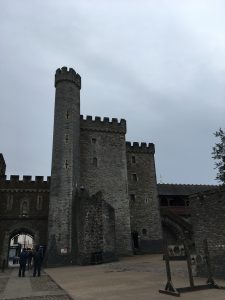
(It used to hold prisoners. Now it holds the men’s washroom.)
Flash forward about five hundred years. The third Marquess of Bute inherited the castle and in the late 1700s engaged Lancelot “Capability” Brown (what a name!) to redo the grounds. Capability Brown filled in the moat, dug up and cleared many of the extant ruins, and turned Cardiff Castle into a home for the Butes.
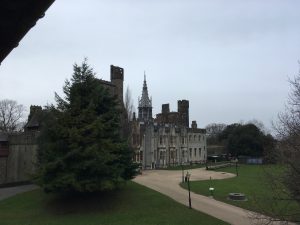
You will notice that you can see much lawn and no tourists. What does not show up in this picture is the dry, thin, hard snow that was at this time coming down at high velocity. Your fearless reporter risked her life for this blog post.
Along came the Victorians and did what Victorians do to old sites, which is Disnify them. (Granted, Walt Disney was Welsh.)

In World War II, the Butes allowed the Cardiff Corporation to hollow out some of the battlement walls and turn them into air raid shelters:

Presumably in the 2000s, the final addition to the castle—an interpretive center that made such an effort to blend in—arrived on the scene:

And of course, beyond the castle walls, time marched on:
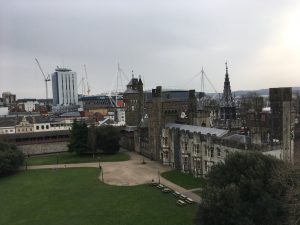
And speaking of things that march on, although my head said I hadn’t gotten any pictures of the interiors yet and my heart said I shouldn’t relinquish such a splendid opportunity to explore, my fingers said we are very cold and can we go home please, so that is the end of today’s post.